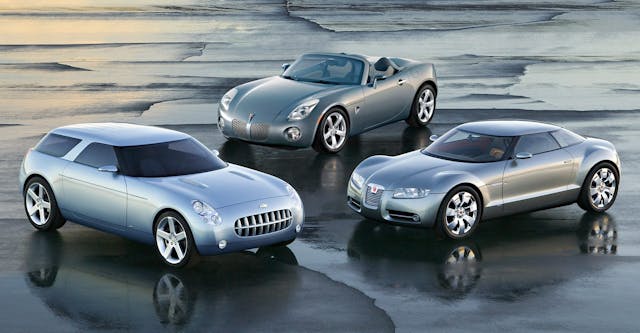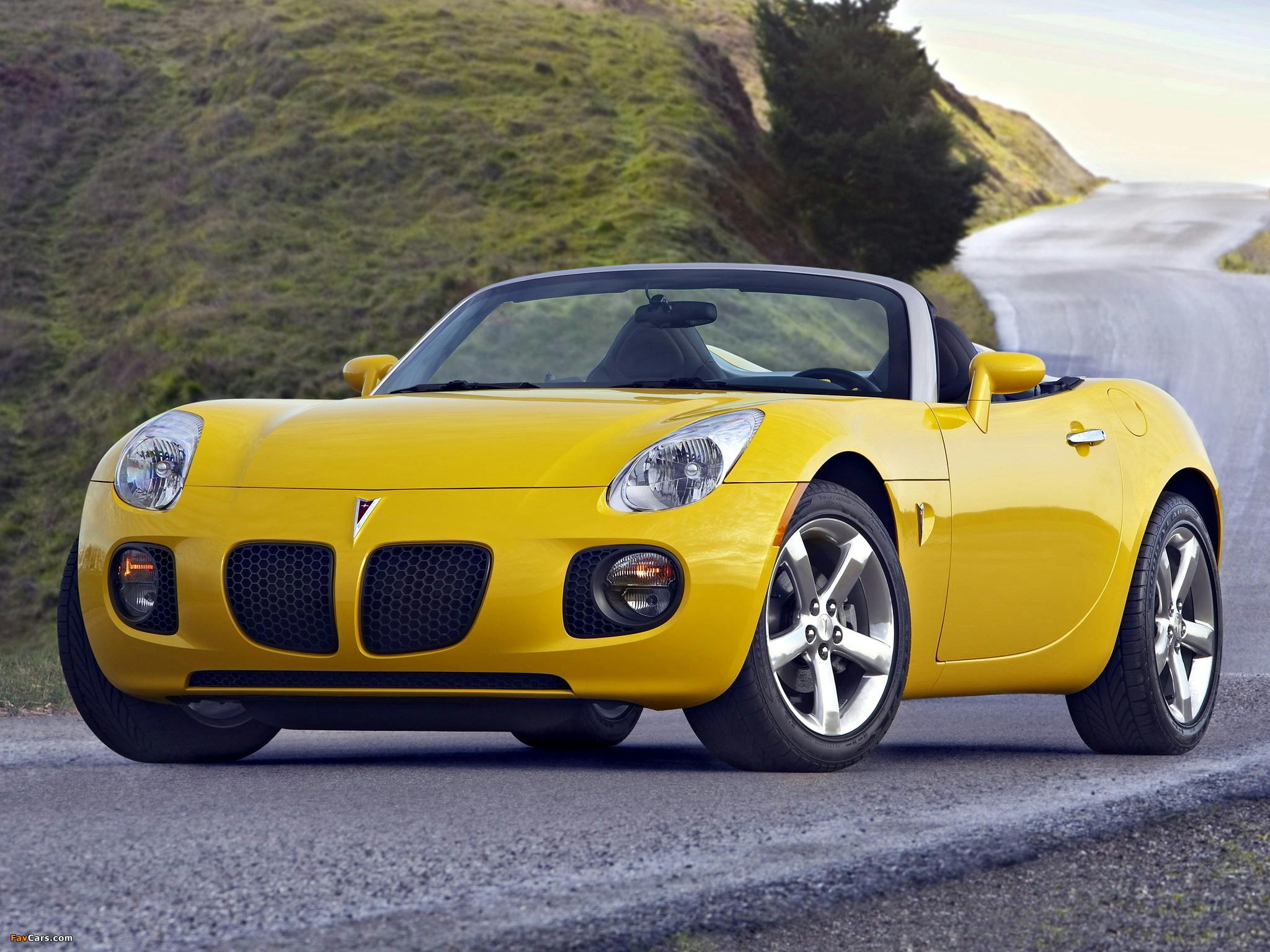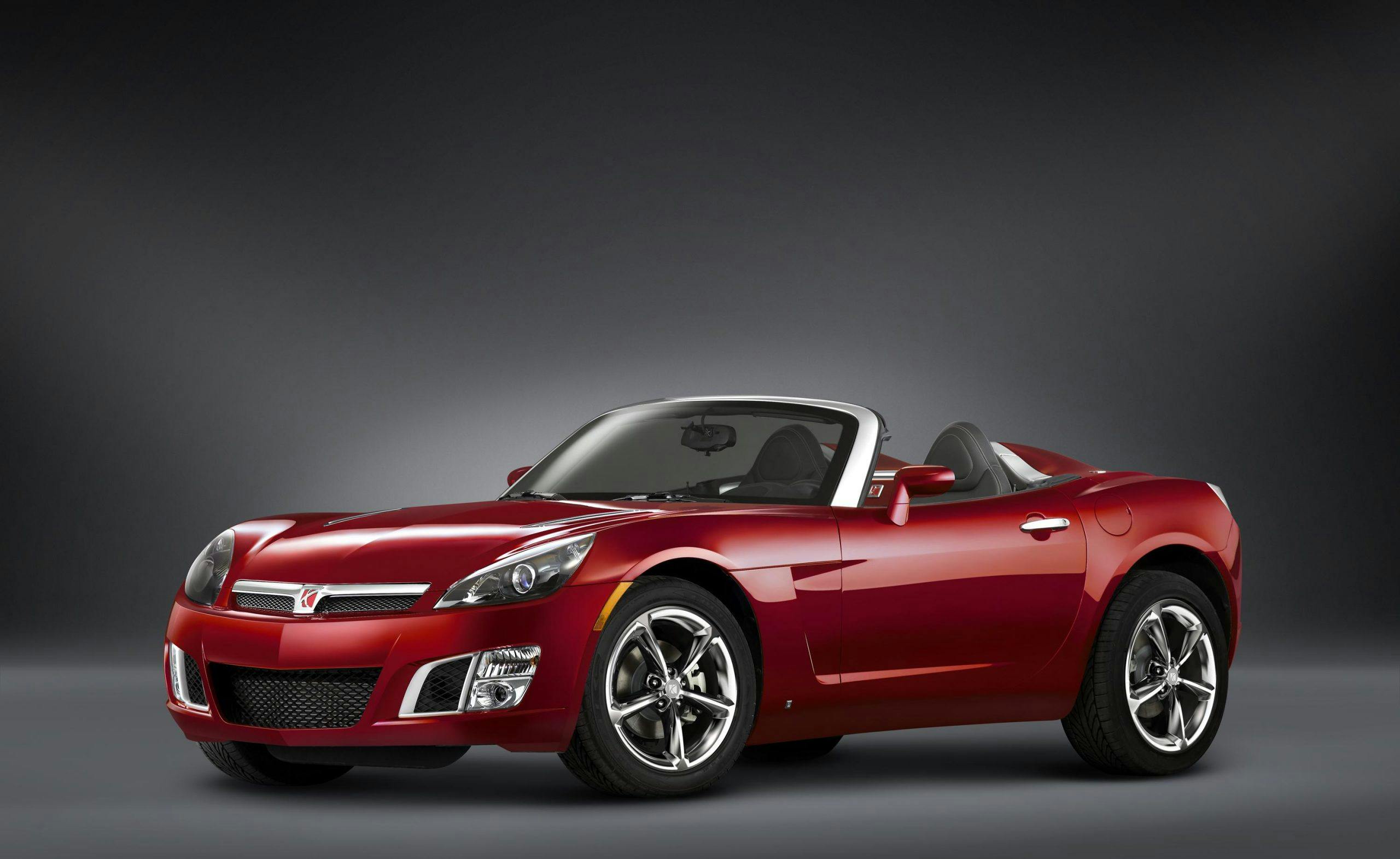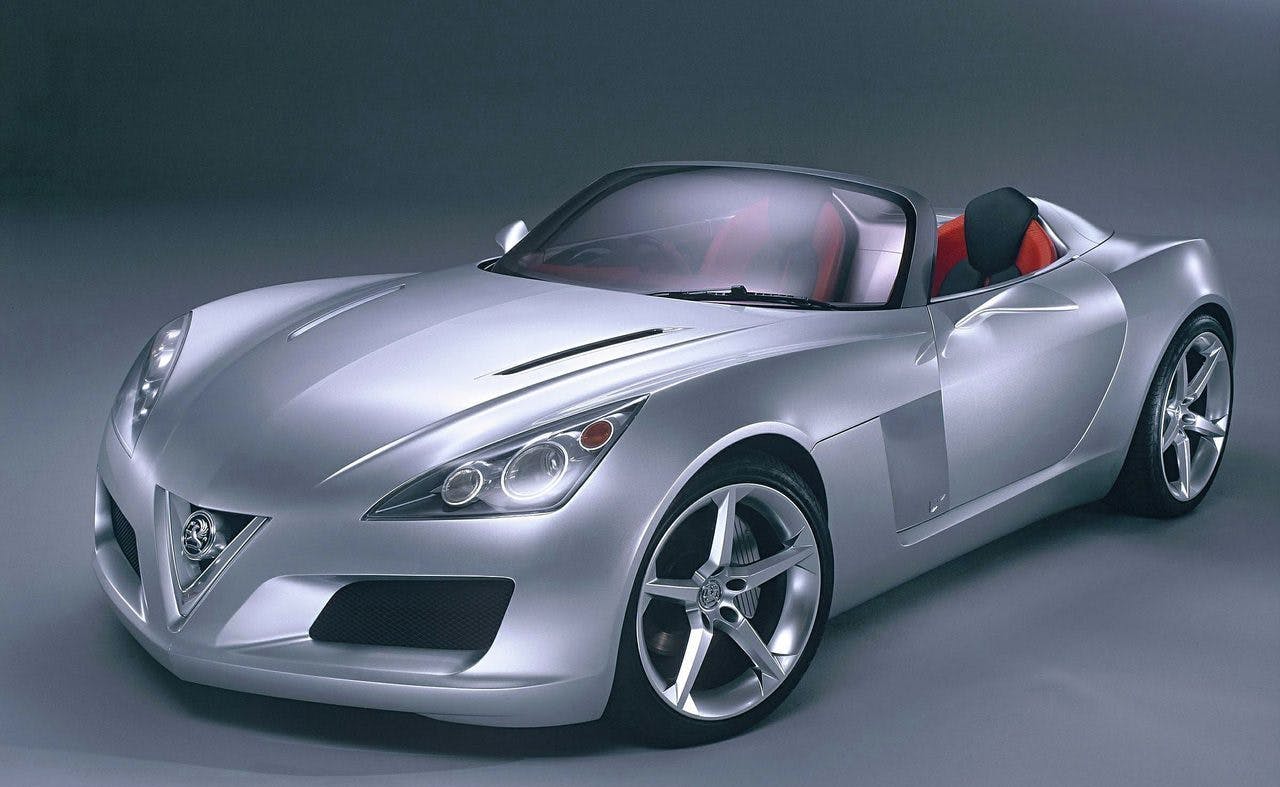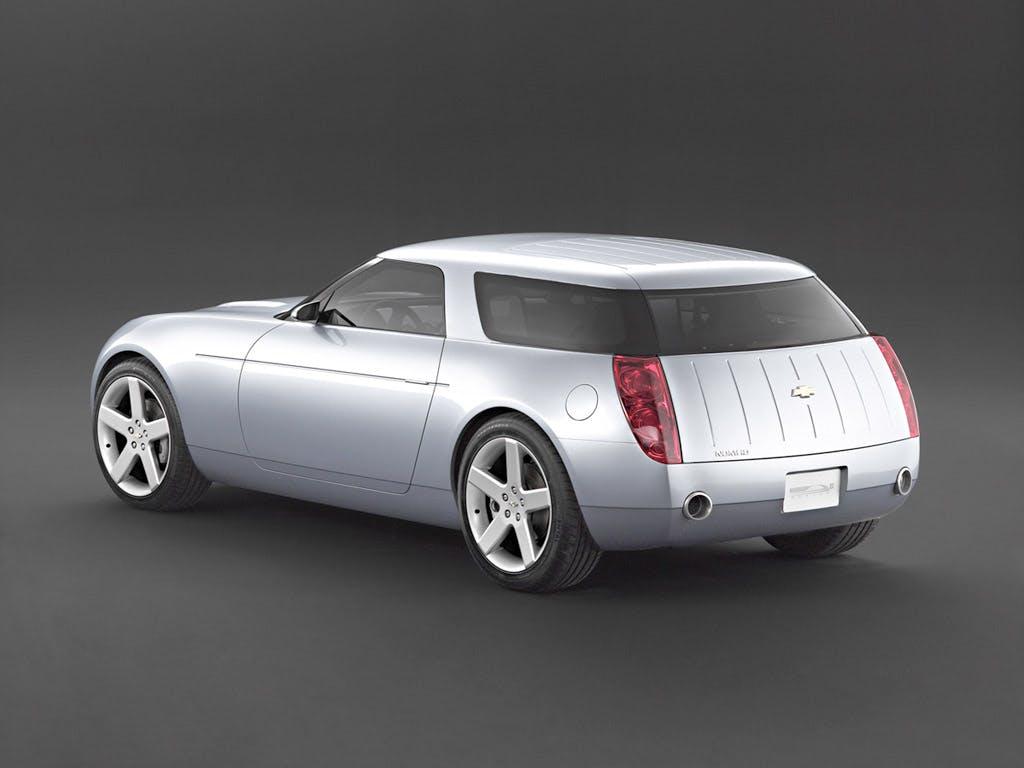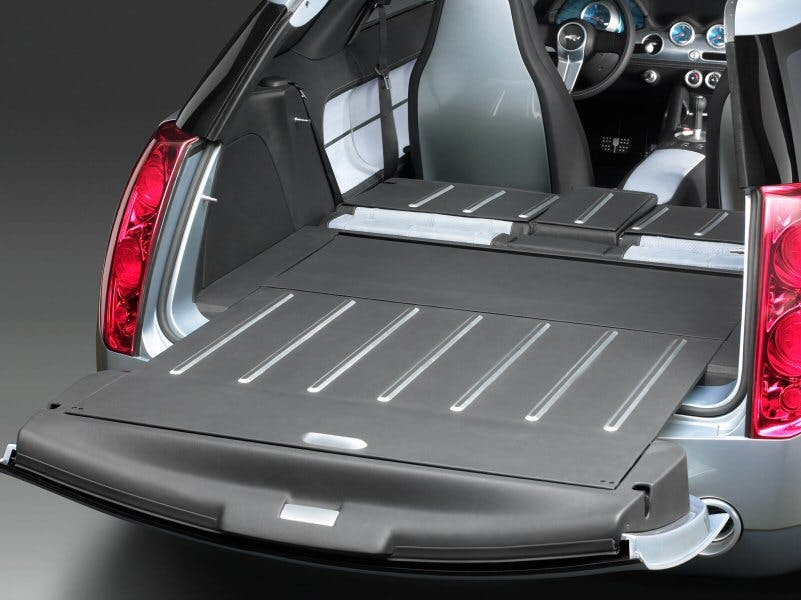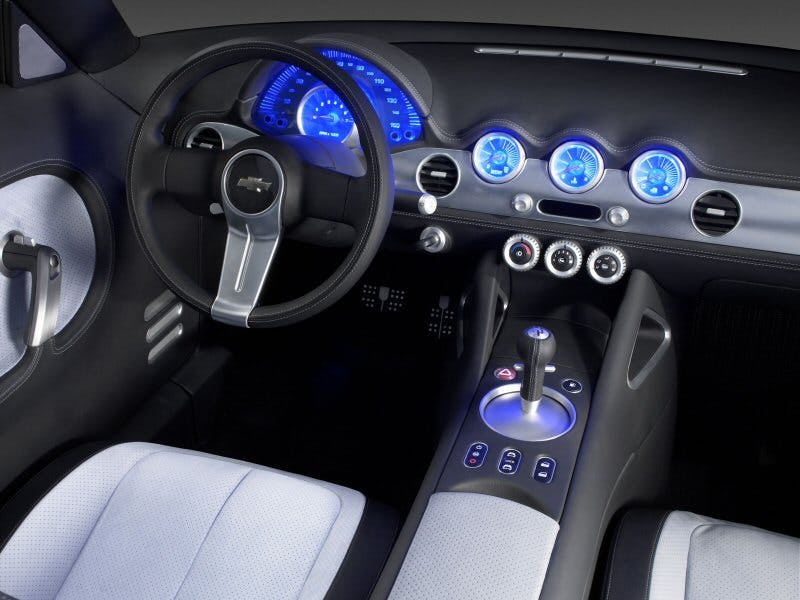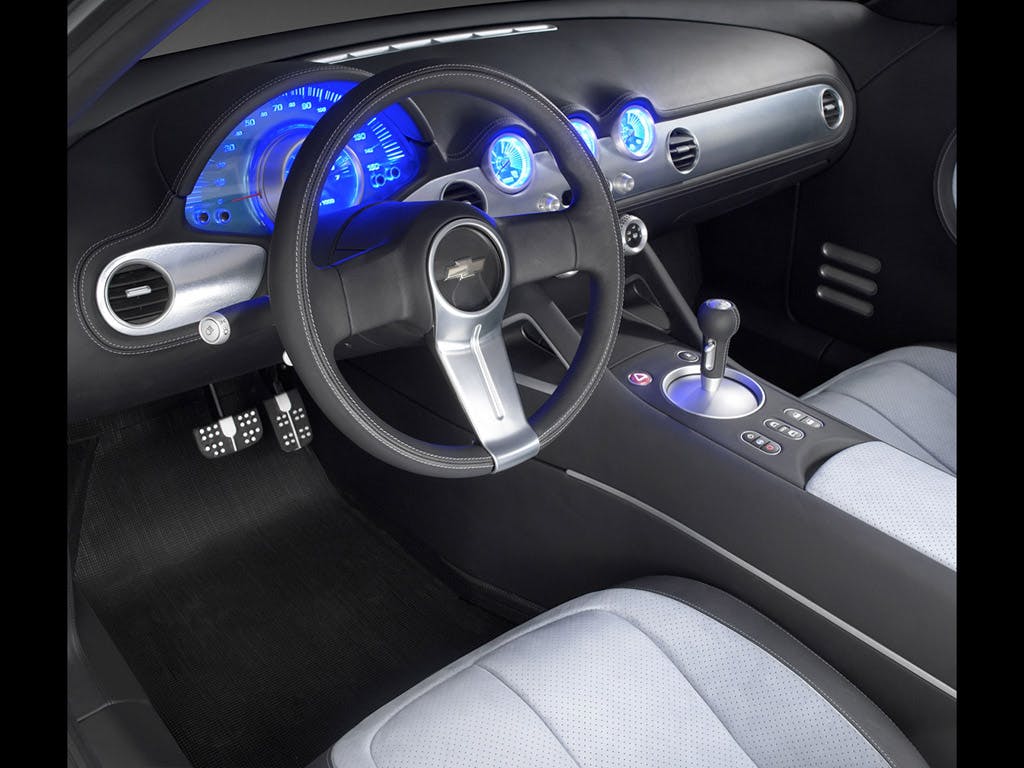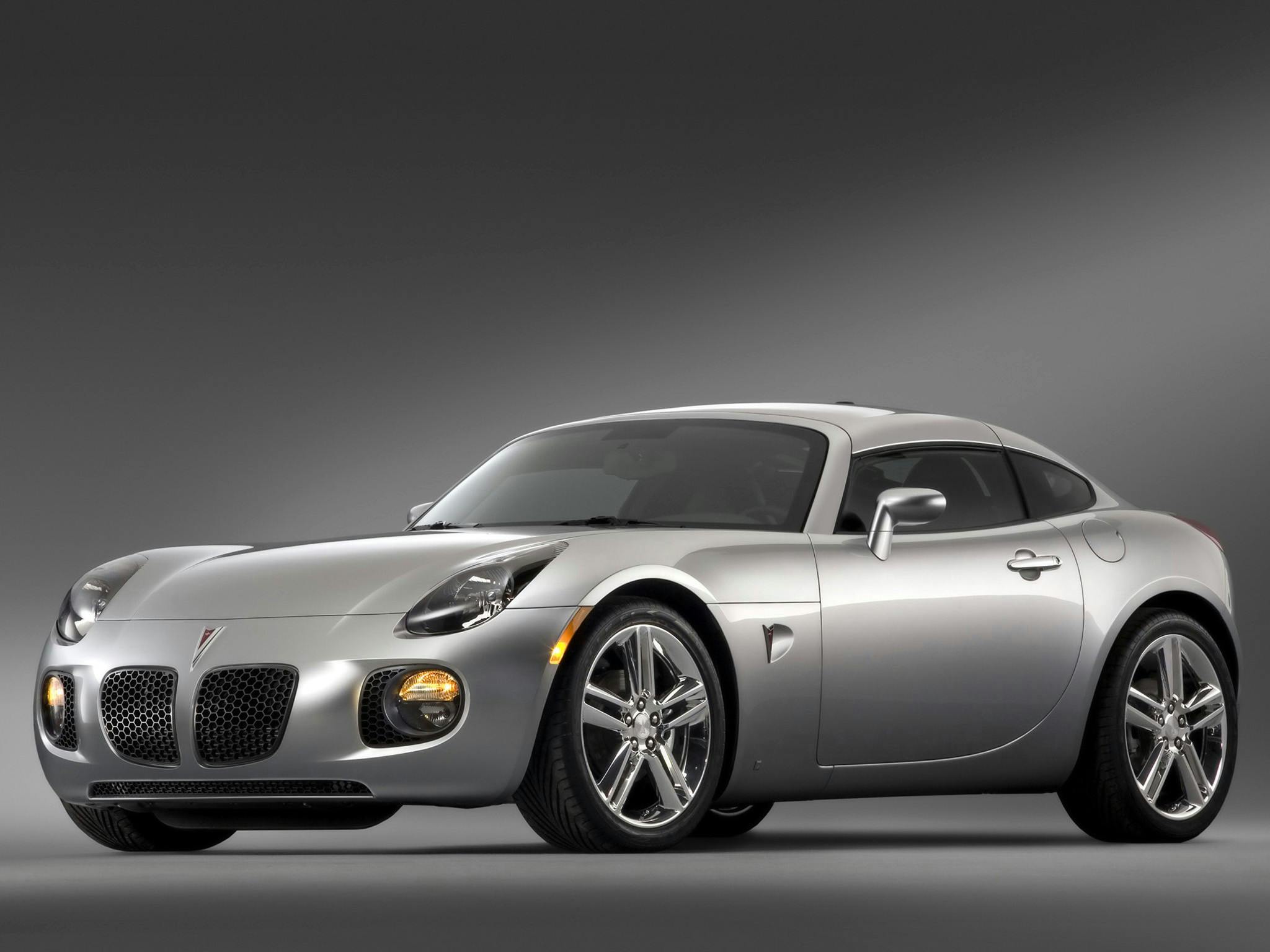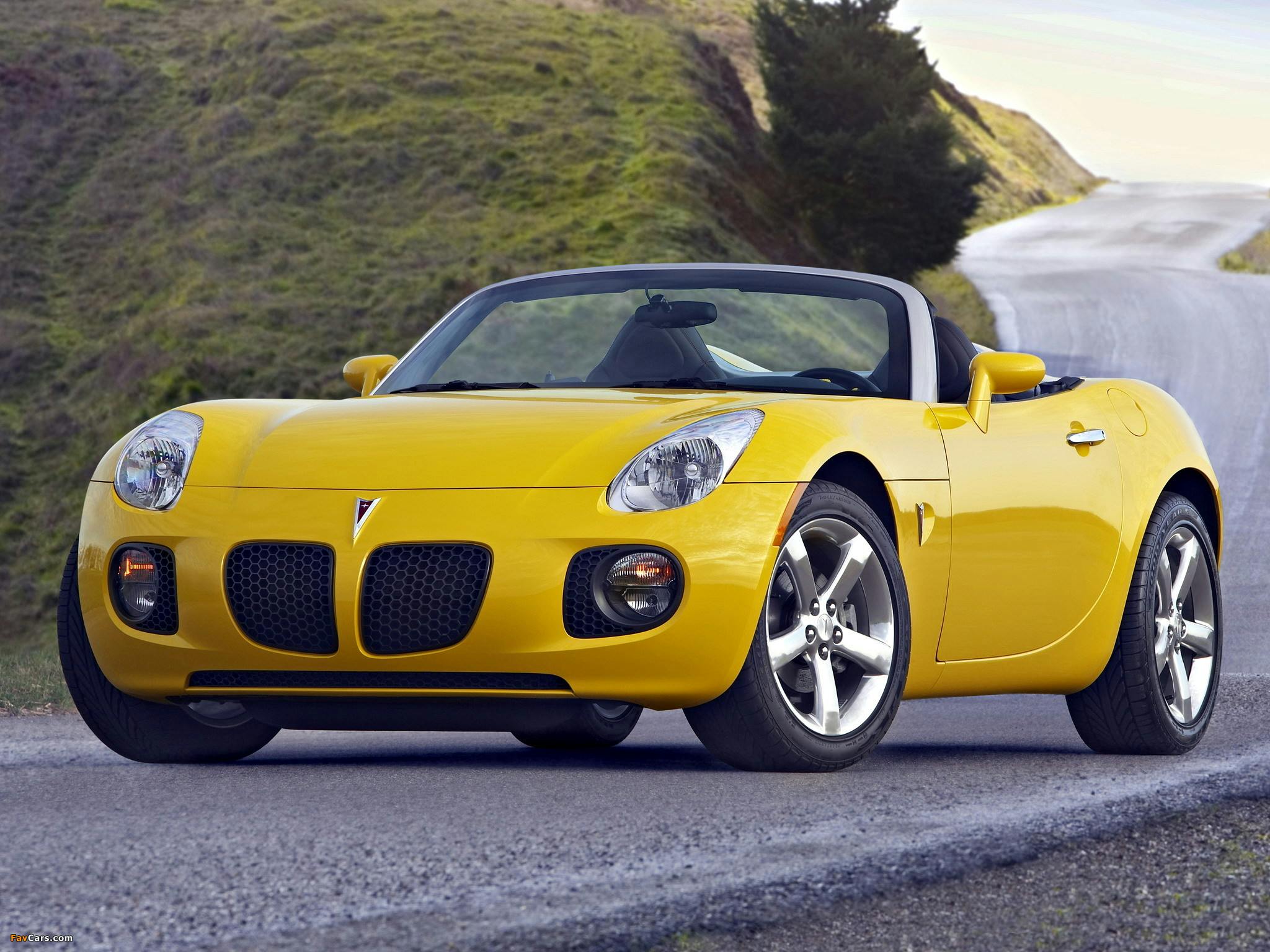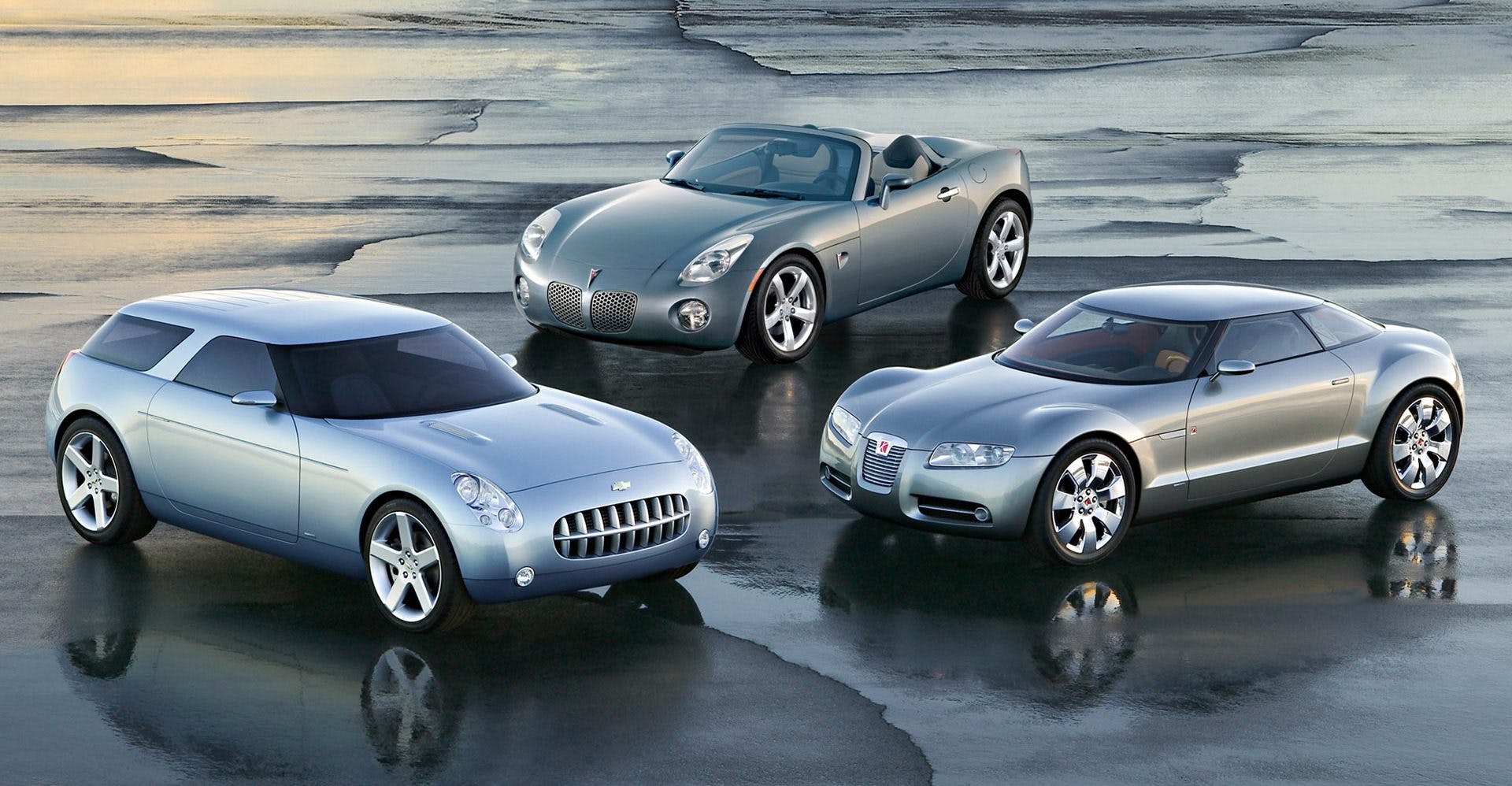Media | Articles
The Pontiac Solstice siblings that might have been
We know the Pontiac Solstice as a short-lived, two-seat roadster—and also, briefly, a hardtop coupe—from the early 2000s. The roadster had a reskinned counterpart at Saturn, the Sky, and that variant was also sold in Europe as the Opel GT and in Korea as the Daewoo G2X. There was, however, supposed to be more to that story.
The Solstice first appeared as a show car at the 2002 North American International Auto Show in Detroit, and it was displayed in running form as both a roadster and static coupe. The Solstice was the first GM concept produced at the behest of Bob Lutz upon his arrival at General Motors. The dream of bringing to market an affordable roadster was one Lutz had held for a long time. When he was at Ford, the idea he’d championed took shape in the form of the Ghia Barchetta concept, and later, after he went to Chrysler, it was manifest as the Dodge Copperhead roadster and then as the Plymouth Pronto Spyder. The Ghia Barchetta ended up morphing into the not-so-sporty, front-wheel-drive Mercury Capri convertible, while the Copperhead and the Pronto Spyder never got beyond the show-car stage. With the Solstice, Lutz was determined that his dream would be realized.

The trouble was that GM had nothing close to the compact, rear-wheel-drive platform such a sports car demanded. Lutz was undeterred. At his direction, engineers conjured up the necessary platform, which was called Kappa, along with the necessary drivetrain, switchgear, and lighting. To keep costs down, they used scavenged parts wherever possible—from the Delta small-car front-drive platform, the Cadillac CTS, the Chevy Colorado/GMC Canyon pickups, and even the Hummer H3. The Solstice did get its own hydroformed frame rails and steel central tunnel, however, and the same method was used to stamp the body panels. Hydroforming allowed for a lower investment but limited the production capacity. That was fine, of course, because these sporty vehicles were all low-volume, specialty models.
Multiple models were envisioned. The first concept to appear after the Solstice was the Saturn Sky, just one month later at the 2002 Chicago auto show. That car was a larger, dowdy-looking convertible with rear half-doors, not the Solstice-based roadster that eventually came to market. In 2003, Britain’s Vauxhall wanted to do a show car to celebrate its centenary. GM gave the green light, and the company’s U.K.-based advanced design studio turned out the Vauxhall VX Lightning, which was essentially a re-skinned Solstice. The VX’s design would eventually form the basis of the production Saturn Sky/Opel GT/Daewoo G2X.
Marketplace
Buy and sell classics with confidence
In 2003, as the architecture underpinning the Solstice was nearing production readiness, GM starting mulling over notions of using the Kappa platform to create a broader family beyond the two roadsters. It seemed like the most natural thing in the world to take the new Kappa platform and spread the wealth to other GM divisions, crafting other sporty, low-volume entries. The idea of a Buick 2+2 convertible was rumored to be in play for a time, but it never went anywhere. Instead, when the production Solstice took the stage in January 2004 at the Detroit auto show (just two years after the concept’s debut), it did so alongside two other Kappa-based small cars: a sleek two-door coupe for Saturn and a tidy two-door wagon for Chevrolet.
The Saturn Curve
The Saturn Curve (which GM spelled “CÚRVE”) was a 2+2 coupe that rode on a stretched version of the Kappa platform. In the press release introducing the Curve, GM touted its cosmopolitan pedigree, with the design led by GM North America but carried out in Sweden. Pininfarina, in Italy, took part in the concept’s assembly.
The lead exterior designer was Saab’s Shuichi Yamashita (who is now at Porsche). Roof pillars were concealed under the wraparound side glass, and oversized wheel arches bumped up into the ultra-low hoodline. No body panels were shared with the Solstice, but the Curve concept did feature a front-hinged clamshell hood. For design symmetry, the trunk lid was rear-hinged, which seems a less-than-practical arrangement. The black-and-terracotta interior featured a high center console that incorporated a wavy, blond-wood panel. Yamashita characterized the Curve as “a fun-to-drive sports car” with “a very sophisticated and relaxed feel.”
Under that clamshell hood was a supercharged 2.2-liter Ecotec four-cylinder, with output simply given as “more than” 200 hp and “more than” 200 lb-ft of torque. The engine was backed by a five-speed manual from Getrag. “The powertrain, chassis, and brake systems are based on existing production components,” GM noted in the press release, emphasizing the Curve’s feasibility. As design manager Anthony Lo was design manager added, “The Kappa architecture is a brilliant new canvas on which to design expressive vehicles.”
The Chevrolet Nomad
The other expressive vehicle that debuted alongside the Curve was the Chevrolet Nomad, a modern riff on the 1950s Nomad wagon. Demonstrating the flexibility of the Kappa architecture, the Nomad sat on a 107-inch wheelbase, 2 inches longer than the Saturn Curve. The overall length was 155.5 inches, and the Nomad stood just 55.1 inches tall. Here, the 2.2-liter Ecotec four was turbocharged, with output stated at 250 hp and 325 lb-ft, and paired with a five-speed automatic.
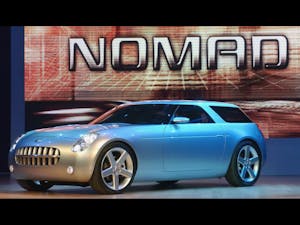
As with the Curve, GM boasted of the Nomad’s internationalism. The exterior design was done in Great Britain under Simon Cox, and this car also was built in Italy by Pininfarina. Although it’s pretty clearly a wagon, GM asserted that “It’s not a sedan, wagon, SUV, or any other categorizable vehicle.” Well, OK. This was another 2+2 seater, and its flexible cargo hold included neat features such as a slide-out load floor and a removable rear roof section.
Retro design elements included the grille and headlights that evoked early Corvettes, as well as the forward-angled B-pillar and chrome ribs on the tailgate like the original Nomad—not to mention the two-door body style. Inside, the fan-shaped instrument cluster was another retro item, but the black leather upholstery, blue lighting, and aluminum trim gave the cabin a modern look.
“The idea of a compact vehicle like this is more relevant now than ever,” lead interior designer Jose Gonzalez enthused in the press release, which also states, “The Nomad represents another line of thought when it comes to leveraging a new sports car platform.”
The Solstice reached production in the fall of 2005 as an ’06 model; the Saturn Sky appeared in 2006. What few could foresee was that the Kappa cars that did make it to market were speeding toward a brick wall in the form of GM’s bankruptcy, which was triggered by the crash of the financial markets in the fall of 2008. The Solstice hardtop appeared in early 2009, just months before Pontiac was marched off to the guillotine as a condition of the General Motors bailout. The reorg also forced GM to jettison the Saturn division, and the company shuttered the Wilmington, Delaware, factory that built the little roadsters, which slammed the door on any possible Chevrolet variant.
Today, the idea that GM would create a rear-wheel-drive architecture for a family of small passenger cars—particularly coupes, roadsters, and a wagon—seems preposterous. Save for a few holdouts, rear-wheel-drive small cars are dead (even BMW’s newest small entries ride on a front-wheel-drive architecture). The Solstice, and the vision that it was part of, now seems like a distant dream.
